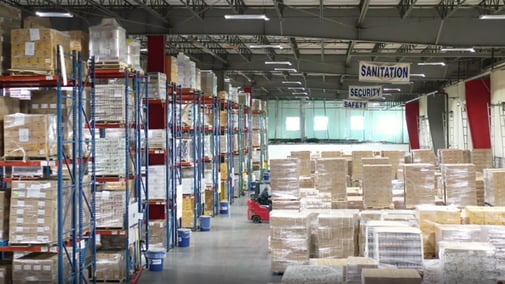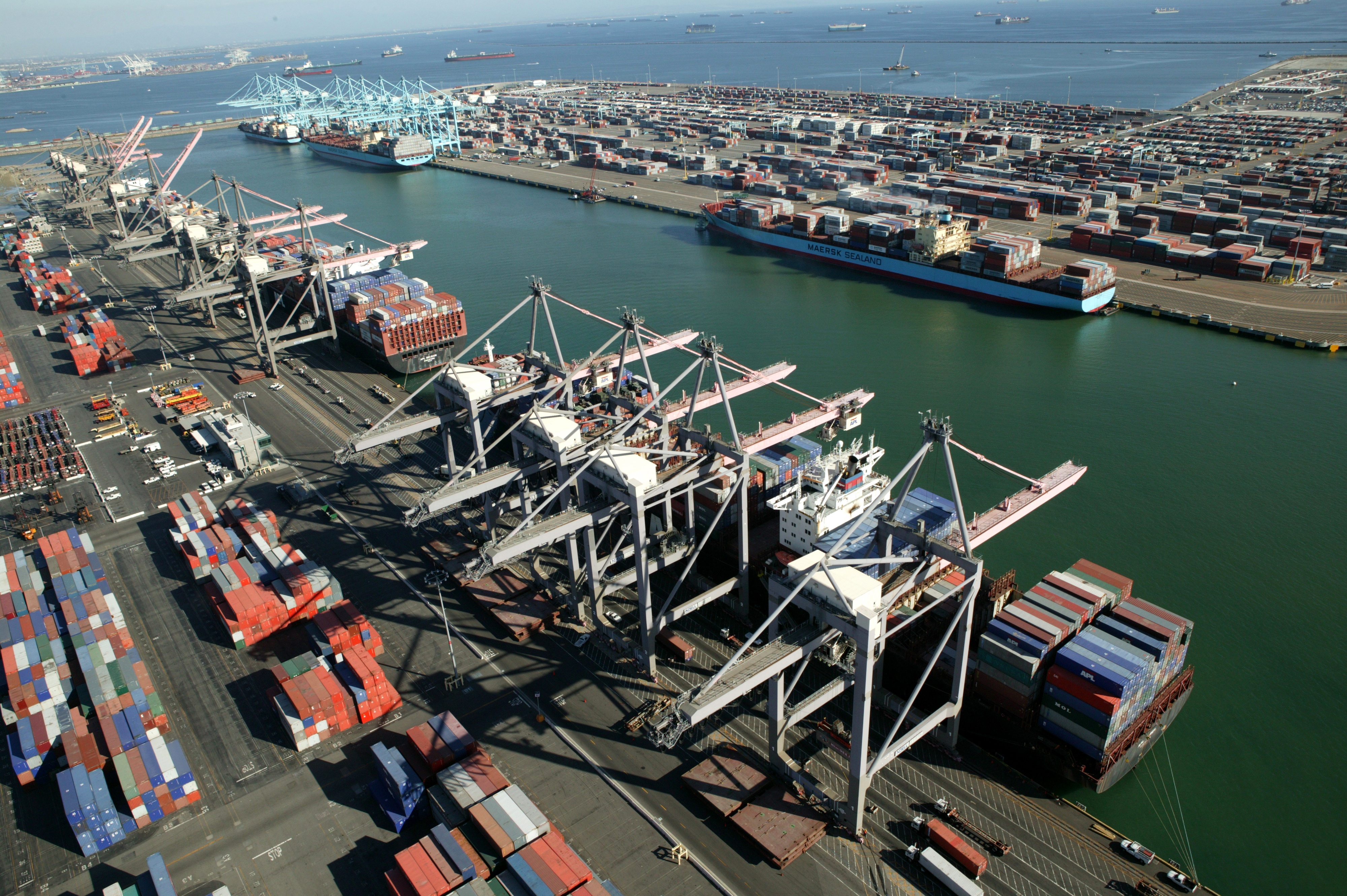The outsourcing of logistics services can be the move that supercharges a company’s operations, replacing headaches related to scale, staffing, and inefficiency, with a more efficient, flexible solution. Arriving at the decision to outsource, however, is not always easy. You need to determine if your operation is ready for such a leap, and then hurdle the barriers – whether real or perceived – your company may have about outsourcing. In this article, we’ll examine characteristics of companies ready to outsource and address the barriers that many prospective outsourcers have.
Who should outsource logistics services
 Let’s first look at some of the characteristics of companies that are ready to outsource. After all, outsourcing logistics services to a third-party logistics (3PL) provider should really be a solution to a problem. So, what are the common logistics problems companies face?
Let’s first look at some of the characteristics of companies that are ready to outsource. After all, outsourcing logistics services to a third-party logistics (3PL) provider should really be a solution to a problem. So, what are the common logistics problems companies face?
You’re unable to scale operations. Many companies struggle to manage their lowest and highest volume periods with equal ease. When volumes are high, companies will staff up their warehouse operations – only to let many of those associates go once volumes tick downward again. This staffing dance is expensive and impossible to scale. As warehouse labor management is a core component of a 3PL’s operations, you may choose to outsource to remove labor-related headaches.
You have difficulty keeping up with state requirements. It can be tricky if you’re thinking of expanding operations into another state, as regulations may be different. It can be especially tricky if you are considering expanding operations into California, as CA regulations are often very different (and more stringent) from those in the other 49 states. Instead of adapting to these new requirements yourself, you may choose to hand off operations to a 3PL that already operates in your chosen area.
You’re outgrowing your warehouse capacity. When this happens, you can certainly invest in newer and bigger space. But is running a warehouse a core competency? By partnering with a 3PL that offers shared warehousing, your allotted space can expand and contract to meet your needs, creating a variable cost structure where logistics costs parallel your revenue stream.
Technology investments are required to remain competitive. In this situation, do you make large capital investments in leading WMS and TMS systems, or do you partner with a 3PL that already has this technology in place? Many choose the latter because of the lower cost involved and the elimination of time spent implement tech and getting staff members up to speed.
Your product line is expanding. For many companies, the introduction of new products is a common occurrence. These new products, however, may come with a host of logistics-related challenges that you may not initially anticipate. For products that require a climate-controlled environment, for example, there may be new equipment, requirements and regulations to comply with. Or let’s say that you’re selling hand sanitizer in the wake of COVID-19. Your warehouse may be able to store 10 pallets of it legally, but 1,000 pallets may be an entirely different story in terms of regulations. As such, you may choose to work with a 3PL that has the infrastructure and expertise to handle these products on your behalf.
Barriers to the outsourcing of logistics services
If your company is facing these – or similar – problems, the time may be right to outsource your logistics operations to a 3PL partner. For some companies, however, this realization never leads to action. For them, the perceived barriers to outsourcing may outweigh the perceived benefits. But are these barriers based largely on misperceptions? Let’s take a look.
Perceived barrier #1: the cost is high. If you’re considering outsourcing logistics services to a 3PL, you’re likely concerned about the price tag. It’s true that in-house operational costs don’t factor in a profit, while 3PL costs do. But the bottom line is that 3PLs should be able to use their experience to support your same volumes in a smaller footprint using fewer people.
3PLs also offer many additional ways to reduce your logistics costs. Here are just a few examples.
- With shared warehousing, you’re paying only for the space and labor you need. When you run warehousing operations yourself, on the other hand, you’re paying for a set amount of space and labor – whether that space and labor is used or not.
- 3PLs with robust warehouse management systems (WMS) can manage inventory for multi-channel distribution in real time. With such a system, you no longer need to contend with multiple, sometimes duplicate, instances of inventory for B2B and B2C orders which can throw your weeks of supply and cycle counting off track.
- On the transportation side, 3PLs can consolidate your shipments with its other customers to create loads heading to the same destinations. This ‘share the ride’ approach can substantially reduce your transportation spend.
- 3PLs can help you reduce global shipping costs by transloading heavyweight containers upon arrival.
- Some 3PLs have teams dedicated to vendor compliance and can save you money by avoiding chargebacks – and fighting them should they occur.
Perceived barrier #2: outsourcing will result in service disruption. Many companies have a concern that moving inventory to a 3PL will create a time gap during which their inventory is not available – upsetting ecommerce customers and retail vendors.
The truth is that, for most companies, there is little disruption. It all depends on two factors: picking the right 3PL and both parties doing all the necessary pre-work so that “go-live” happens without a hitch. This pre-work involves a variety of action items, including the following:
- Development of a timeline to which both parties are held accountable
- Integration of systems and careful testing of data transfer processes
- Transmission of projected inventory with SKU-level detail to your 3PL early in the process so that it can engineer storage configurations in the warehouse in advance
- Updating ship points with your customers who will now pick up product at the 3PL facility as of a designated ‘cutover date’
From there, you and your 3PL can agree to an inventory transfer date that causes the least amount of disruption to customers (e.g., over a long weekend).
Or, in a perfect world, you can start by transferring excess inventory so that you can fulfill orders for as long as possible from your current location. Then, as you get close to depleting that inventory, your 3PL can transfer the remaining items quickly. This is especially seamless when your 3PL also has a transportation operation in-house to make the moves for you.
With all the pre-work performed, order fulfillment can start quickly after products arrive at the 3PL warehouse.
Perceived barrier #3: the 3PL won’t treat your business like its own. A common concern among prospective outsourcers is that their business won’t be important to their 3PL. Avoiding this situation requires picking the right 3PL provider in the first place. Some of the things to ask yourself during the vetting process include the following:
- Does your 3PL’s company culture align with yours?
- When you tour the 3PL's facilities, are the associates on the floor knowledgeable about the services they provide and the products they handle?
- Is your 3PL’s client roster full of companies much bigger than yours – thus increasing the odds that you’ll feel like a small fish in a big pond?
- When you speak to other customers of the 3PL, are they happy with the relationship?
- Can your 3PL report on – and be accountable to – the KPIs and metrics that matter most to your business?
While no 3PL partnership is ever guaranteed to run smoothly, doing your due diligence before the contract is signed can put the odds heavily in your favor.
Outsourcing of logistics services on the West Coast
If you’re considering outsourcing logistics services on the West Coast, be sure to pay a visit to Weber Logistics. We have 2.4 million square feet of space across 12 California distribution centers. Our facilities are strategically located near some of the world's busiest ports and offer storage solutions for a wide range of industries including chemical, retail, food and beverage, and consumer goods. To learn more about outsourcing logistics operations to a partner that will work with you every step of the way, contact us today.





 Capital Management
Capital Management